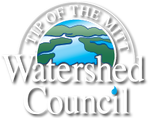Northern Michigan’s lakes, streams and wetlands are precious natural resources. Their protection is vital in preserving the ‘Up North’ character that is so special. One of the most important ways you can protect your lake or stream is to control erosion and sedimentation of your shoreline or streambank. Erosion and sedimentation can have a serious impact on water quality, wildlife habitat, and property values.
Learn more about shoreline restoration for homeowners on our site here. Or download the Shoreline Erosion: A Guidebook for Shoreline Property Owners by clicking the button below.
Small Dam Removal
More than 2,500 dams have been built and still exist across Michigan’s rivers. Each dam produced a perceived benefit – to move timber, operate mills, generate power – but each has also contributed to extensive cumulative impacts. Dams alter the flow of water and prevent the natural movement of sediment in the river channel. They also block fish passage, limit access to habitat, fragment river ecosystems, and impair water quality both in the reservoir and downstream.
Many of the constructed dams within the state are aging or obsolete requiring maintenance to keep them safe and functioning properly, often placing a heavy burden on property owners. The removal of outdated and dilapidated dams and other structures from a river can be beneficial. To face the growing crisis of aging dams in our waters, Michigan can turn to dam removal not only as an effective river restoration tool, but also as a community revitalization opportunity.
While dam removal presents the opportunity to restore our waters, any dam removal involves considering many factors including downstream sedimentation, upstream migration of exotics, impacts to fish and wildlife, especially threatened and endangered species, and potential loss or degradation of wetlands.

